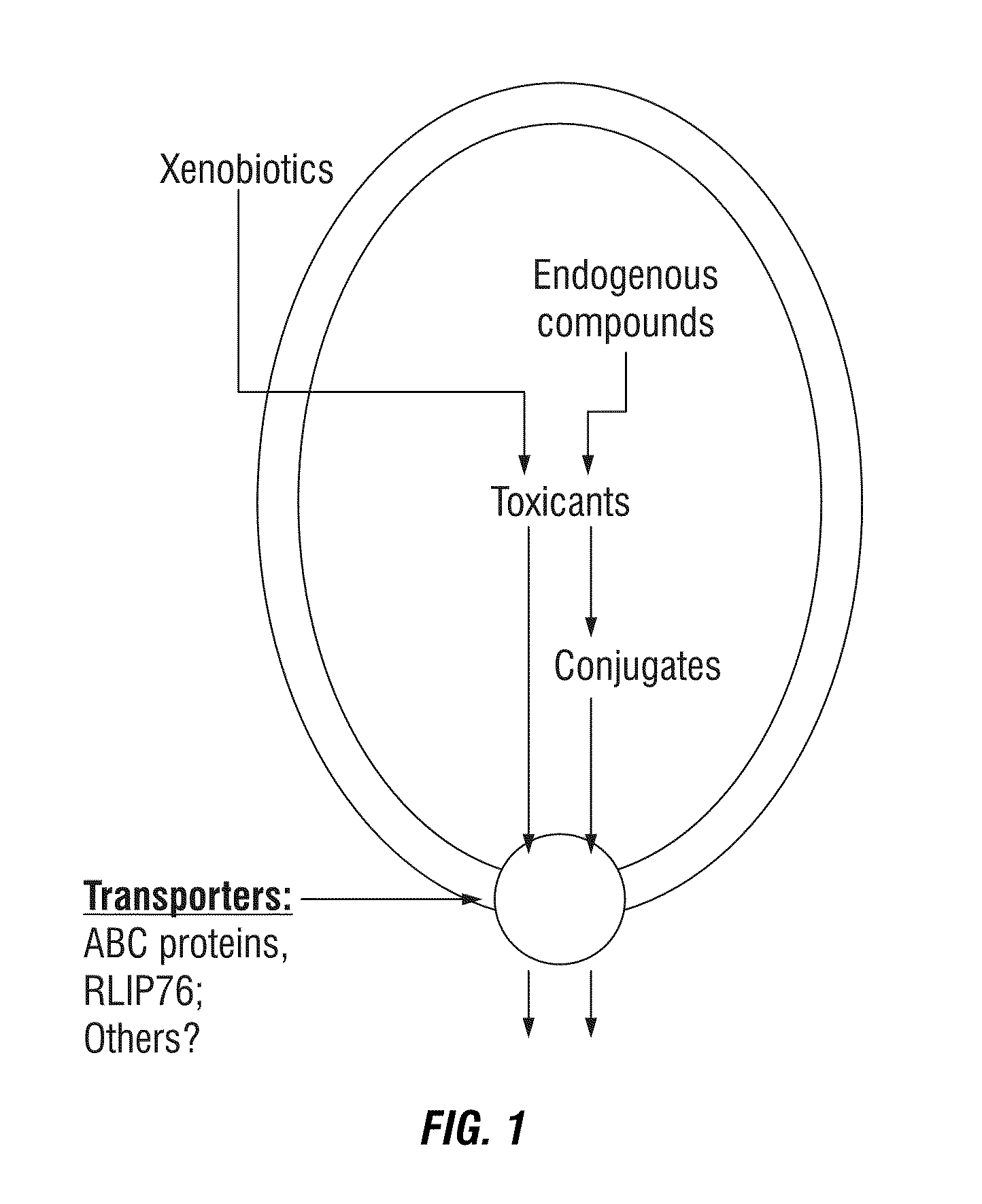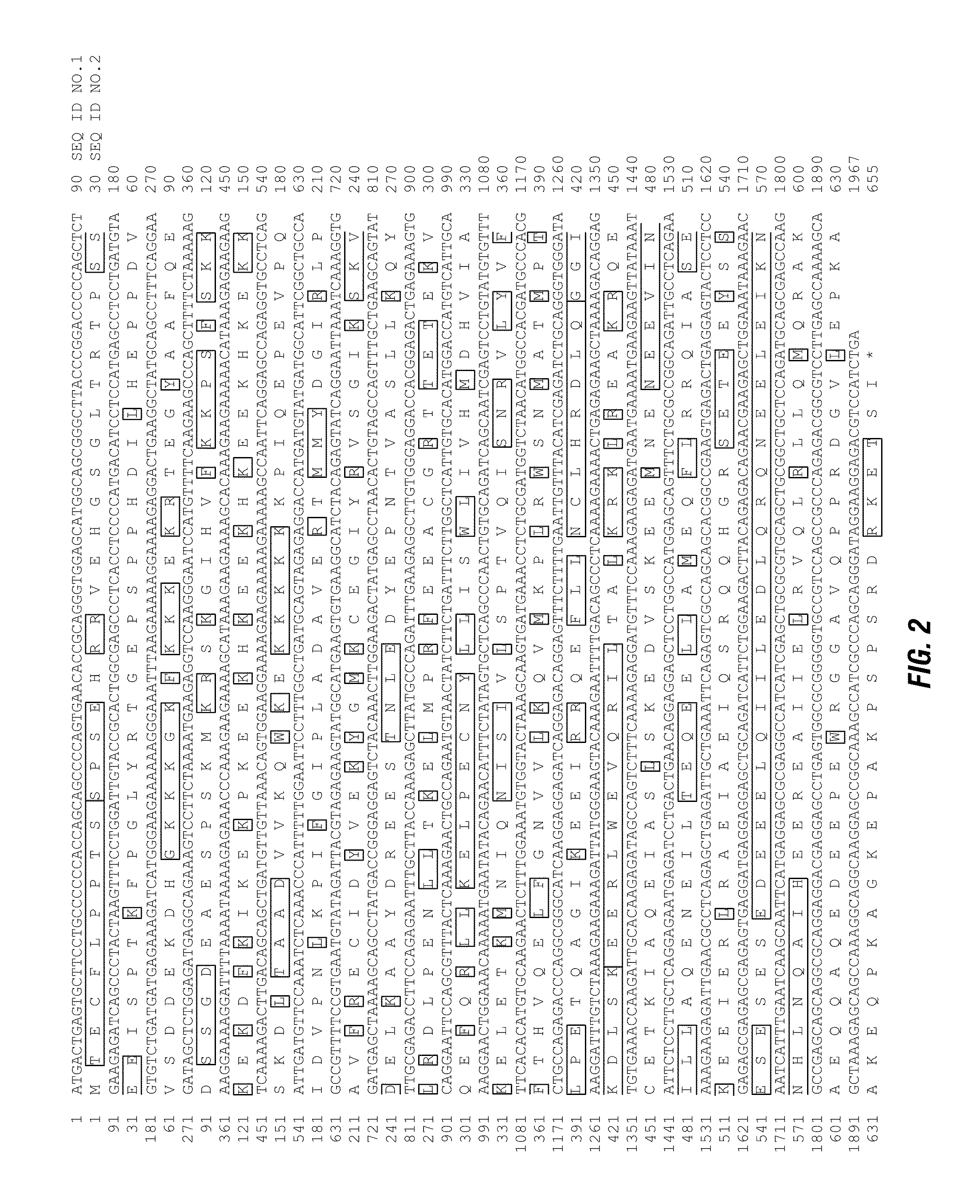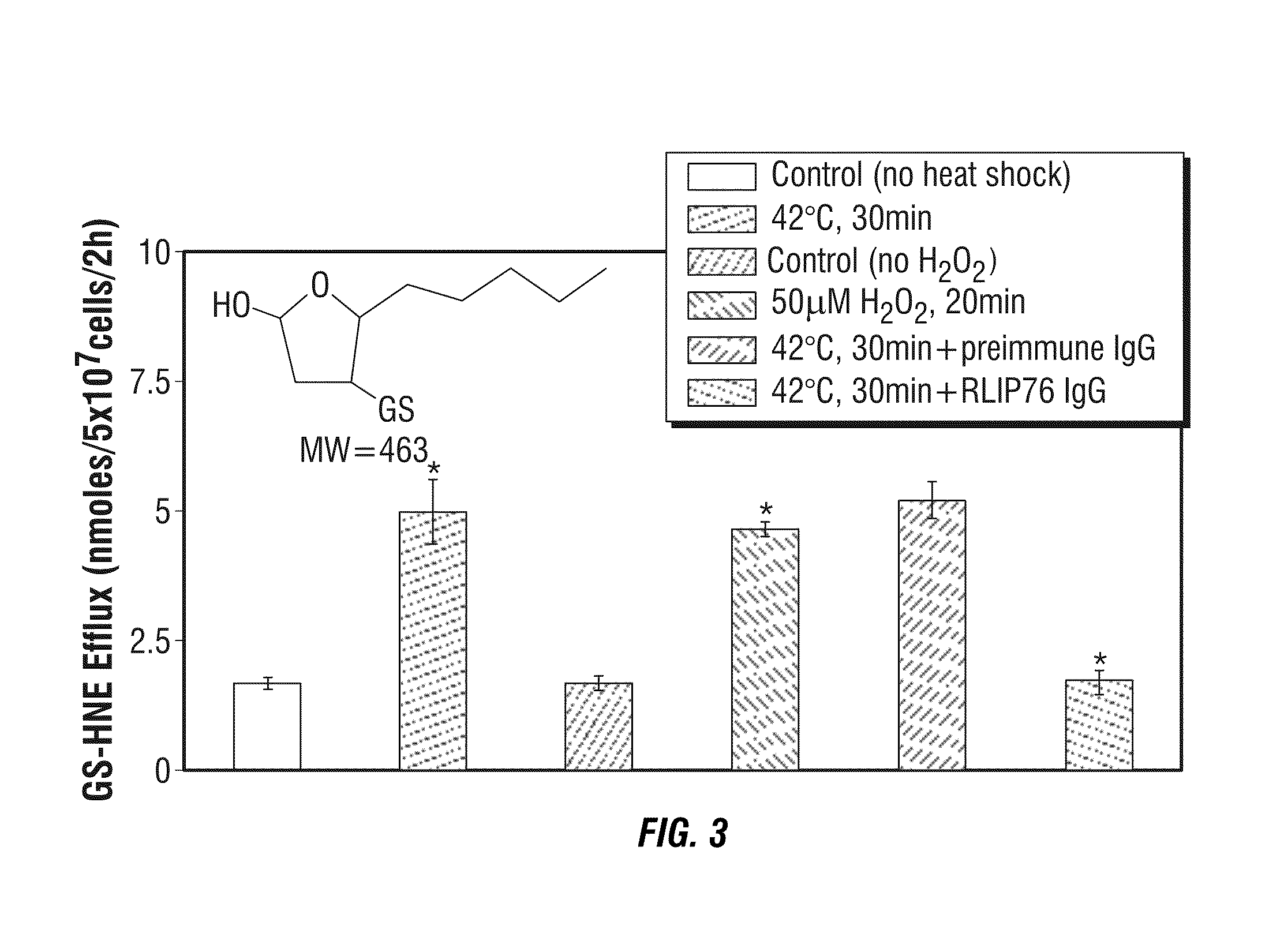Protection against and treatment of ionizing radiation
- Summary
- Abstract
- Description
- Claims
- Application Information
AI Technical Summary
Benefits of technology
Problems solved by technology
Method used
Image
Examples
example 1
Radiation Protection by RLIP76
[0130]In all animal models, the relationship between radiation exposure and survival will vary depending upon experimental parameters, and so must be determined for each particular model with no treatment (control). FIG. 14A shows the baseline survival curves at different radiation doses for the C57 / Bl6 mouse strain. As expected, survival times decrease with increasing radiation dose. A graph comparing the mean time to death as a function of radiation dose is shown in FIG. 14B.
[0131]In order to investigate whether RLIP76 could be effective when delivered within several hours after radiation exposure, a series of studies were conducted to explore the protective benefit of RLIP76 when given at varying doses, exposure levels, and times after exposure. One study compared the sensitivity of X-irradiation between RIP1+ / + and RIP1− / − mice and evaluated the effects of pharmacologic augmentation of RLIP76 in these animals. See Singhal et al., Int. J. Radiation O...
example 2
Radiation Protection by RLIP76 Liposomes Plus Anti-Oxidants
[0137]Unprotected RLIP76 protein is susceptible to proteolysis, rendering administration of the bare protein challenging. In this study, RLIP76 was administered in the form of lipid encapsulated proteoliposomes. In order to reduce or prevent oxidative degradation while awaiting administration, the buffer in which RLIP76 was reconstituted into liposomes contained an antioxidant, for example butylated hydroxytoluene (BTH). One or more other antioxidants could also be added to the liquid encapsulated proteoliposomes comprising RLIP76. Of note, BHT has been reported in the scientific literature as having a radioprotective effect on its own. Liposomes have also been used to deliver candidate radiation countermeasure drugs, but the ability of liposomes themselves to offer protection is not clear from the literature.
[0138]Given that lipid-based delivery of RLIP76 may improve stability of the protein in a pharmaceutical formulation,...
PUM
| Property | Measurement | Unit |
|---|---|---|
| Time | aaaaa | aaaaa |
| Dimensionless property | aaaaa | aaaaa |
| Dimensionless property | aaaaa | aaaaa |
Abstract
Description
Claims
Application Information
 Login to View More
Login to View More - R&D
- Intellectual Property
- Life Sciences
- Materials
- Tech Scout
- Unparalleled Data Quality
- Higher Quality Content
- 60% Fewer Hallucinations
Browse by: Latest US Patents, China's latest patents, Technical Efficacy Thesaurus, Application Domain, Technology Topic, Popular Technical Reports.
© 2025 PatSnap. All rights reserved.Legal|Privacy policy|Modern Slavery Act Transparency Statement|Sitemap|About US| Contact US: help@patsnap.com



